#bassano romano
Photo
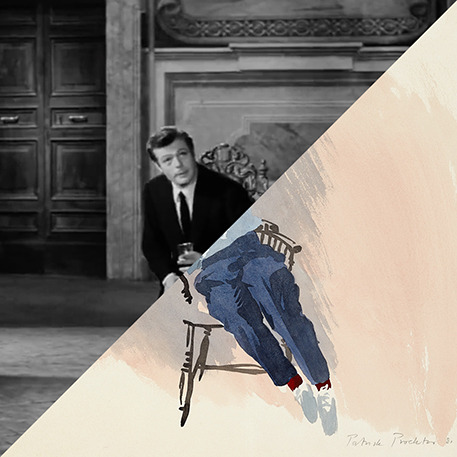
Federico Fellini, La dolce vita, 1960
VS
Patrick Procktor, Dominic Prima, 1981
#federico fellini#dolce vita#la dolce vita#cinema#movie#cinecittà#the oscars#Academy Award for Best International Feature Film#academy awards#marcello mastroianni#tuscia#palazzo Giustiniani Odescalchi#bassano romano#patrick procktor#swingin london#watercolor#art#contemporary art#collage#cut and paste
51 notes
·
View notes
Text

Michaelangelo's Risen Christ (first version)
c. 1515
Marble, height 205 cm
Monastero San Vincenzo Martire, Bassano Romano
39 notes
·
View notes
Text
Vicenza: denunciato per uso di atto falso, falsità materiale commessa da privato e ricettazione

Vicenza: denunciato per uso di atto falso, falsità materiale commessa da privato e ricettazione.
Gli Agenti del Commissariato di P.S. di Bassano del Grappa (VI) hanno denunciato in stato di libertà E.M.M.M., 25enne cittadino egiziano, residente a Milano, per i reati di uso atto falso, falsità materiale commessa da privato e di ricettazione.
L'uomo è stato intercettato a Romano d'Ezzelino, in Via Ghiaia, a bordo di un'autovettura OPEL Zafira su cui viaggiava insieme ad altre 5 persone....
Leggi articolo completo su La Milano
Read the full article
0 notes
Text
Review: Metal Park 2024
Romano d’Ezzelino, ItalyJuly 6 – 7, 2024
Metal Park is a newly started metal festival located in northern Italy. Describing exactly where it is located is not easy. The festival is just outside a town called Bassano del Grappa and is therefore in the neighbouring municipality of Romano d’Ezzelino. So even though Metal Park is not technically in Bassano del Grappa, that’s where you need to go,…
#Bruce Dickinson#Cavalera Conspiracy#Coroner#Dark Tranquillity#Emperor#Fleshgod Apocalypse#Metal Park#Michael Monroe#Stratovarius#The Darkness
1 note
·
View note
Text
2 mag 2024 15:01
CIELITO OLINDO – IL GIORNALISTA EDOARDO MONTOLLI SMONTA IL PRESUNTO SCOOP DI “GIALLO” SUL DIARIO SEGRETO DI OLINDO ROMANO: “LA CLAMOROSA CONFESSIONE È TALMENTE INEDITA CHE VIENE CITATA PERFINO A PAGINA 67 DELLA SENTENZA DI PRIMO GRADO A COMO. OLINDO IGNORAVA CHE QUALCUN ALTRO AVREBBE MAI LETTO I SUOI APPUNTI SIA QUANDO SI PROFESSAVA COLPEVOLE, SIA QUANDO SI DICHIARAVA INNOCENTE. SONO IL SEGNALE DI UNA PERSONALITÀ DISTURBATA, MA ANCHE…” -
“ACCOGLI NEL TUO REGNO YOUSSEF E GLI ALTRI, A CUI NOI ABBIAMO TOLTO LA VITA” – IL SETTIMANALE “GIALLO” PUBBLICA I TESTI ORIGINALI (E LE IMMAGINI) DEL DIARIO SEGRETO DI OLINDO ROMANO. PAGINE CHE SEMBRANO UNA CONFESSIONE DELL’UOMO E CHE RISALGONO A QUATTRO MESI DOPO LA STRAGE DI ERBA. NESSUNO SAPEVA CHE STESSE TENENDO UN DIARIO SEGRETO, NASCOSTO DENTRO UNA BIBBIA...
STRAGE DI ERBA, LA FINTA ESCLUSIVA DI GIALLO SULLA BIBBIA DI OLINDO
Estratto da https://edoardomontolli.substack.com/
[…] Non c’è alcuna esclusiva e nessuna novità: nè il diario di Olindo è segreto, nè lo sono le sue immagini. La Bibbia di Olindo fu integralmente acquisita al processo di Como. Il quotidiano La Provincia di Como ci fece proprio una campagna sopra, con tanto di collage delle pagine, per accusare il netturbino. Quanto alla frase «mai vista prima» ovvero la clamorosa confessione, […] è talmente inedita che viene citata perfino a pagina 67 della sentenza di primo grado a Como.
Peraltro, a riportare per la prima volta quella frase «mai vista» fummo io e Felice Manti il 17 gennaio 2008 su Il Giornale, qualcosa come 16 anni fa. Sedici anni prima della finta esclusiva di Giallo. Però, esattamente come allora, nessuno si sofferma su alcuni fatti. Evidentemente, come appena documentato, perché non hanno alcuna cognizione degli atti.
Punto primo. Sulla Bibbia ci sono alcune ammissioni di colpevolezza e ben 71 ammissioni di innocenza. Ma ciò che conta è che in nessuno dei due casi Olindo sapeva che la Bibbia gli sarebbe stata sequestrata. Ignorava che qualcun altro avrebbe mai letto i suoi appunti sia quando si professava colpevole, sia quando si dichiarava innocente. Sono il segnale di una personalità disturbata, ma anche scioccata dai fatti.
Punto secondo. Su quella Bibbia Olindo prese un sacco di appunti in codice (del quale poi perdeva regolarmente le chiavi di decrittazione). Era il segnale evidente che ormai non si fidasse più di nessuno, costretto dalla sequenza degli eventi a recitare la parte del colpevole.
Punto terzo. Se bastasse una dichiarazione di colpevolezza a giustificare una condanna, avremmo le carceri piene di mitomani. Chi lo sostiene non ha alcuna cognizione della cronaca nera. Ne Il grande abbaglio raccontammo, ad esempio, il caso del mostro di Foligno: prima che Luigi Chiatti fosse arrestato, un giovane di Melegnano sostenne di essere il Mostro. All’inizio dissero che conosceva dettagli che solo l’assassino poteva conoscere. Poi si accorsero che in realtà non c’entrava assolutamente nulla.
Punto quarto. Olindo sapeva che doveva recitare una parte perché convinto di finire in manicomio con Rosa. La recitò anche con lo psichiatra Massimo Picozzi, raccontando una versione ancora totalmente sballata della strage, come abbiamo documentato in questo video.
Punto quinto. Non si è mai capito chi convinse Olindo a prendere appunti sulla Bibbia rivendicando i delitti. Così come nessuno ha mai saputo chi lo convinse a rispondere a Don Bassano Pirovano, che gli aveva scritto una lettera chiedendogli di pentirsi. Il Corriere della Sera ipotizzò che il ghost writer della missiva di Olindo fosse il suo compagno di carcere Giuliano Tavaroli, ma l’ex capo della security di Telecom smentì.
Di certo successe un fatto abbastanza sconcertante, specie per chi è un fedele cristiano: la lettera di pentimento di Olindo non finì infatti in un privato cassetto di Don Bassano Pirovano, ma venne spiattellata su tutti i giornali. Chi e perché lo fece, nessuno lo ha mai saputo.
0 notes
Text
Il secondo Cristo della Minerva più dinamico del primo
Le differenze che ci sono fra la prima versione del Cristo Portacroce e la seconda sono lampanti ma alcune meritano un’attenzione particolare.
Vero è che bisogna considerare che a entrambe le opere misero mano altri scultori dopo di me ma l’impostazione di base fu per tutte e due la mia.
Mentre la prima versione oggi a Bassano Romano è decisamente più statica, con quel braccio levato a…

View On WordPress
#antonietta bandelloni#artblogger#arte#artinfluencer#bellezza#english#inartwetrust#masterpiece#Michelangelo Buonarroti#rinascimento#Roma#scultura#storytelling
0 notes
Photo


802)Związek Harcerstwa Rzeczypospolitej w Kanadzie – organizacja kontynuująca tradycje polskiego harcerstwa powstała w 1996 roku na terenie Kanady. Organizacja ta powstała w czerwcu 1996 roku i skupia obecnie około 50 członków w trzech szczepach:
"Millenium" w Etobicoke
"Quo Vadis" w Scarborough (dzielnice Toronto)
"Zodiak" w Peterborough.
Związek Harcerstwa Rzeczypospolitej w Kanadzie należy do Kongresu Polonii Kanadyjskiej (KPK) i Światowej Federacji Niezależnego Harcerstwa (WFIS). Podstawowe Cele ZHR w Kanadzie:
krzewienie poczucia przynależności do narodu polskiego
rozwijanie umiejętności niezbędnych do życia we współczesnym społeczeństwie poprzez stwarzanie warunków do ich praktykowania w codziennej działalności
ścisła współpraca z rodzicami.
Przyrzeczenie: „Mam szczerą wolę całym życiem pełnić służbę Bogu i Narodowi Polskiemu, nieść chętną pomoc bliźnim i być posłusznym Prawu Harcerskiemu. Przyrzekam lojalną służbę Kanadzie”. Złożenie przyrzeczenia harcerskiego jest potwierdzone słowami: "Na słowie harcerza polegaj jak na Zawiszy". Znakiem zewnętrznym dojrzałości jednostki harcerskiej, symbolem jej wspólnoty i honoru oraz uznaniem jej dorobku i tradycji jest posiadanie sztandaru. Tradycyjnie jednostka harcerska może starać się o posiadanie sztandaru dopiero w momencie, kiedy wychowa sobie we własnych szeregach instruktora, począwszy od skrzata. Zwyczaj ten jest przyjęty przez harcerstwo poza granicami kraju. Związek spełnił ten warunek w maju 2006 r. Udział w Światowych Zlotach:
Jubileuszowy Zlot 100 lecia Harcerstwa Polskiego - Kraków, Polska - 2010
III Światowy Zlot WFIS - Puebla, Meksyk - 2011
XIV Światowy Zlot Wędrowników WOSM - Ottawa, Kanada - 2013
III Europejski Zlot WFIS "Eurocamp" - Bassano Romano, Włochy - 2014.
Organizacja otrzymała w dzierżawie od księży Franciszkanów duży teren u stóp góry “Trzy Krzyże” i rozpoczęła jego zagospodarowywanie na wiosnę 1997 r. W 2009 r. Związek Harcerstwa Rzeczypospolitej w Kanadzie zaadoptował ulicę Old Barry’s Bay Road, znajdująca się w Madawaska Valley na Ontaryjskich Kaszubach. Harcerze i harcerki zobowiązali się sprzątać prawie 16-kilometrową drogę w każde Święto Dziękczynienia.
Władze:
Komendantka Chorągwi – hm. Elżbieta Łyszkiewicz.
0 notes
Photo

VENEZIA E L'INVASIONE NAPOLEONICA Ca' Cornaro - 20 Gennaio 2023 ore 20.30 - Romano d'Ezzelino Con il prof. Renzo Fogliata e il prof. Davide Lovat In una cornice meravigliosa, all'interno dei saloni di Ca' Cornaro, la residenza in prossimità di Bassano, voluta dal Doge Giovanni II Corner. (presso Villa Ca'cornaro) https://www.instagram.com/p/CnjYiC8t7hs/?igshid=NGJjMDIxMWI=
0 notes
Photo

Leno Landini #armonica #elettrificata #rocknroll #blues #rock #folk #popolare 🎥#elettritv💻📲 #webtv #musicaoriginale #indian 🍂 #canalemusicale #webtvmusicaoriginale #musicaitaliana #sottosuolo #musica 🔊 #underground #music 👹 #electric #harmonica #history #italy #tibervalley #bolsena #roma #bassanoromano #italia 📷 #creativecommons ];)::\/>> http://www.elettrisonanti.net/galleria-fotografica
#leno landini#armonica elettrificata#folk#popolare#rock#rock n roll#elettritv#misica originale#canale musicale#web tv musica originale#web tv#musica italiana#sottosuolo#musica#underground#music#tibervalley#bassano romano#roma#bolsena#italia#italy#electric#harmonica
0 notes
Photo






Ronciglione, Sutri e Bassano Romano
0 notes
Text
Il Palazzo Giustiniani svela i suoi segreti
Il Palazzo Giustiniani svela i suoi segreti
Palazzo Giustiniani a Bassano Romano e il feudo di una grande famiglia.
Il Palazzo Giustiniani-Odescalchi di Bassano Romano è uno dei grandi patrimoni artistici della Tuscia che ci attende, insieme al territorio che lo circonda, per essere conosciuto e per regalarci autentiche sorprese dalla bellezza inaspettata.
Sabato 27 novembre potrete scoprirlo insieme alla guida turistica ed ambientale…

View On WordPress
#anna rita properzi#annarita properzi#palazzo giustiniani#Palazzo Giustiniani-Odescalchi di Bassano Romano
0 notes
Text
Michelangelo’s The Risen Christ: Discovering the sacred in the profane.
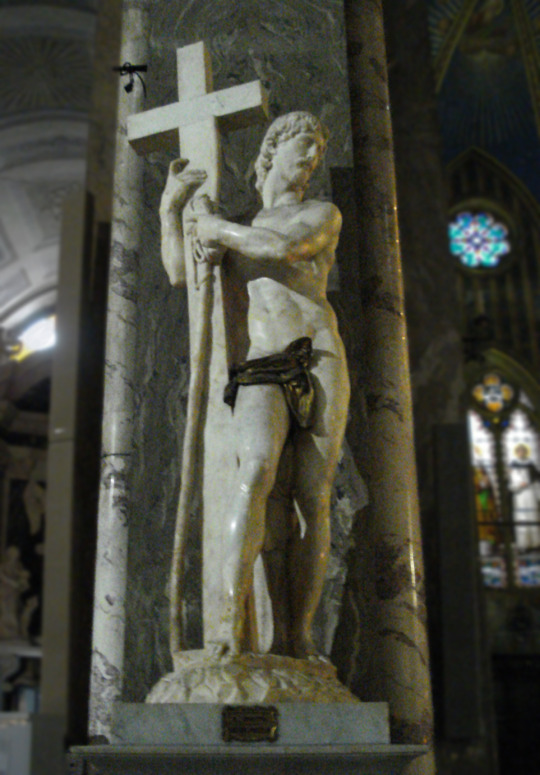
The true work of art is but a shadow of the divine perfection.
- Michelangelo Buonarroti
While a visit to Rome’s grand squares like Piazza Navona is at the top of everyone’s list, there is much more to the Eternal City. The Piazza della Minerva, is one of Rome’s more peculiar squares and is a must-see for lovers of Bernini’s work.
As one of the smaller squares in Rome, Piazza della Minerva holds some interesting sites. Built during Roman times, the square derives its name from the Goddess, Minerva, the Roman Goddess of wisdom and strategic warfare. During the 13th Century, the decision was made to build a Christian Church on top of what was once a square dedicated to a pagan Goddess – and so the church of Santa Maria Sopra Minerva was born, a beautiful example of Gothic architecture and Rome’s only Gothic church.
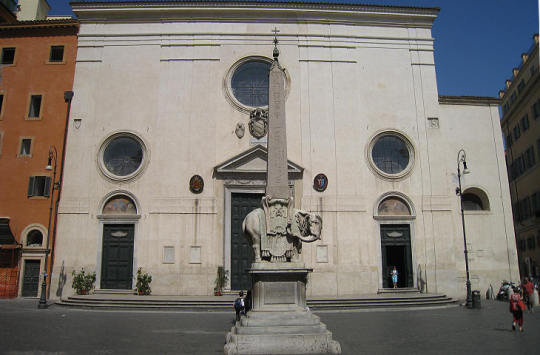
In fact this is the only Gothic church in Rome. It resembles the famous Church of Santa Maria Novella in Florence. There are three aisles inside the church. The soaring arches and the ceiling in blue are outstanding. The deep blue colours dominate the structure while the golden touches promote the intricate design. There are paintings of gold stars and saints. The stained glass windows are beautiful too.
In the centre of the Piazza is an elephant with an Egyptian obelisk on its back, one of Bernini’s last sculptures erected by Bernini for Pope Alexander VII and possibly one of the most unusual sculptures in Rome. There are several theories which aim to decipher Bernini’s inspiration for the sculpture, some of which point to Bernini’s study of the first elephant to visit Rome, while others point to a more satirical combination of a pagan stone with a baroque elephant in front of a Christian church.
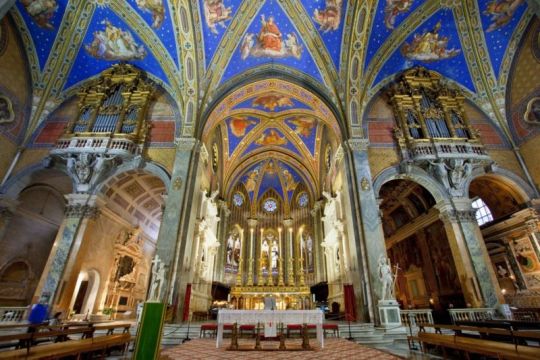
Tourists flock to see the elephant but more often than not they miss out visiting an almost forgotten marble masterpeiece by Michelangelo himself inside the church. This controversial statue has resided in the Santa Maria sopra Minerva Church in Rome for almost five hundred years. Indeed The Risen Christ by Michelangelo is one of the artist's least admired works. While modern observers frequently have found fault with the statue, it satisfied its patrons enormously and was widely admired by contemporaries. Not least, the sculpture has suffered from the manner in which it is presently displayed and from biased photographic reproduction that emphasises unfavorable and inappropriate views of Christ.
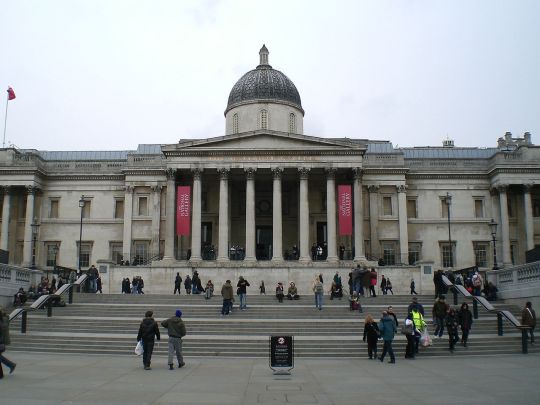
Around 2017 I was fortunate on a visit back to London to see once again Michelangelo’s marble masterpiece, The Risen Christ, which was being displayed in all its naked glory at an exhibition at the National Gallery.
This was another version of this great sculpture that no one has got round to covering up. It has just come to Britain. Michelangelo’s first version has been lent to the National Gallery, in London, for its exhibition Michelangelo and Sebastiano del Piombo in 2017. It came from San Vincenzo Monastery in Bassano Romano, where it languished in obscurity until it was recognised as Michelangelo’s lost work in 1997.

I found it profoundly moving then as I had seen the other partially clothed one on several visits to the church in Rome. It has always perplexed me why this beautiful work of art has been either shunned to the side with hidden shame or embarrassment when it holds up such profound sacred truth for both art lover or a Christian believer (or both as I am).
Michelangelo made a contract in June 1514 AD that he would make a sculpture of a standing, naked figure of Christ holding a cross, and that the sculpture would be completed within four years of the contract. Michelangelo had a problem because the marble he started carving was defective and had a black streak in the area of the face. His patrons, Bernardo Cencio, Mario Scapucci, and Metello Vari de' Pocari, were wondering what happened when they hadn't heard for a while from Michelangelo. Michelangelo had stopped work on The Risen Christ due to the blemish in the marble, and he was working on another project, the San Lorenzo facade. Michelangelo felt grief because this project of The Risen Christ was delayed. Michelangelo ordered a new marble block from Pisa which was to arrive on the first boat. When The Risen Christ was finally finished in March 1521 AD Michelangelo was only 46 years old.

It was transported to Rome and this 80.75 inches tall marble statue was installed at the left pillar of the choir in the church Santa Maria sopra Minerva, by Pietro Urbano, Michelangelo's assistant (Hughes, 1999). It turns out that Urbano did a finish to the feet, hands, nostrils, and beard of Christ, that many friends of Michelangelo described as disastrous). Furthermore, later-on in history, nail-holes were pierced in Christ's hands, and Christ's genitalia were hidden behind a bronze loincloth.
Because people have changed this sculpture over time; many are disappointed with this work of art because it is presently different than the original work that Michelangelo made. The Risen Christ had no title during Michelangelo's lifetime. This sculpture was given the name it has now, because Christ is standing like the traditional resurrected saviour, as seen in other similar works of art.
It was in discussion with an art historian friend of mine currently teaching I was surprised through her to discover the sculpture’s uncomfortably controversial history. There is no doubt Michelangelo’s marvellous marble creation has raised robust debates about where beauty as an aesthetic sits between the sacred and the profane. And nothing exemplifies that better than the phallus on Michelangelo’s The Risen Christ.
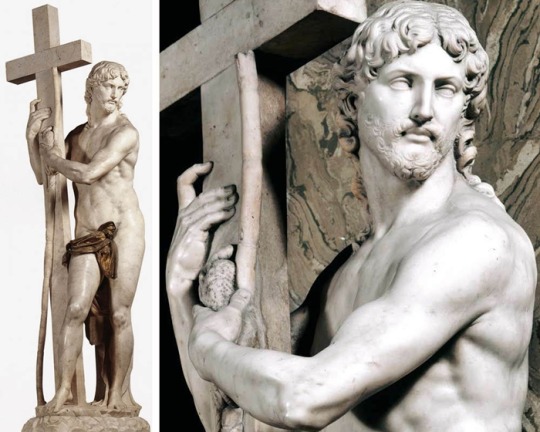
For the majority of its time there, however, the phallus has been carefully draped with a bronze loincloth - incongruous at best, and prudish at worst, but either way a less than subtle display of the historic Church’s discomfort with the full physicality of Christ.
Indeed, it is worth noting that this attitude prevails, at least in some sense, into the twentieth-century: the version of the statue in Rome remains covered to this day, and much of the critical attention the sculpture has received after Michelangelo’s death has been grating. Romain Rolland, an early biographer, described it as ‘the coldest and dullest thing he ever did’, whilst Linda Murray bluntly dubbed the work ‘Michelangelo’s chief and perhaps only total failure’.
But Michelangelo himself saw no such mistake. The censored statue seen in Santa Maria sopra Minerva is what we might call his second draft.
It’s interesting to note that when artist was originally commissioned to sculpt a risen Christ in 1514, he had all but completed it before realising that a vein of black marble ran across Jesus’ face, marring the image of classical perfection which he so wished to emulate. It had nothing to do with the phallus. Furious, Michelangelo abandoned this Christ - the one I saw at the National Gallery - and began again. Even given a fresh chance, he chose to retain Christ’s complete nudity.
Why was this of such importance to Michelangelo? Why did he so strongly wish to craft the literal manhood of Christ, as never depicted before? Part of the answer may lie in his historical context: the Renaissance in Italy was driven in the part by the remains of Roman antiquity discovered there; study of the classics became commonplace, and scholars tended to consider the Graeco-Roman world as a cultural ideal, with ancient art in particular being emblematic of a lost Golden Age. Famously, classical sculpture was almost always nude.

In his interview with The Telegraph in 2015, Ian Jenkins, curator of the British Museum exhibition “Defining Beauty: The Body in Ancient Greek Art”, attempted to explain this tradition. ‘The Greeks … didn’t walk down the High Street in Athens naked … But to the Greeks [nudity] was the mark of a hero. It was not about representing the literal world, but a world which was mythologised.’
We see evidence for this trend in Greek literature as well as sculpture: Homer’s Iliad and Odyssey, considered by some to be the earliest known works of Western literature, were likely written between the 8th and 7th centuries BC, but their setting is in Mycenaean Greece in the 12th century. The Greeks believed that this earlier Bronze Age was an epoch of heroism, wherein gods walked the earth alongside mortals and the human experience was generally more sublime. In setting the texts at this earlier stage in Greece’s history, Homer echoes the belief held within his contemporary society that mankind had been better before (what we might now call nostalgia, or, more colloquially, “The Good Old Days syndrome”). There is a real feeling of delight present in the distance Homer creates between his actual, flawed society, and the idealised past.
Indeed, it calls to mind a line I once read in an introduction to L.P. Hartley’s The Go-Between, by Douglas Brookes-Davies: ‘Memory idealises the past’. Though modernist texts such as The Go-Between problematise this, in antiquity it was not only commonplace but celebrated to look back to a more perfect existence and relive it through art. The very fact that Michelangelo abandoned his sculpture after years of work on account of a barely noticeable flaw in the marble is evidence that he, too, was striving towards the classical ideal of perfection. ‘Unfortunately,’ Hazel Stanier has commented, ‘this has resulted in unintentionally making Christ appear like a pagan god.’

This opens up another question – why does such a rift exist between the way ancient cultures envisaged their divinity and our own conceptions of a Christian God? Why are we not allowed to anthropomorphise the deus of the Bible in the same way that the Roman gods were?
Christ, of course, makes this somewhat confusing, given that he is described in the Bible as ‘the Word made flesh’, a physical and very human incarnation of the spiritual being that we call God. Theology tells us that he is fully human and fully divine, and yet the Church have excluded him from many aspects of life that a majority of us see as typifying a human being. Christ has no apparent sexual desires or romantic relationships, and though not exempt from suffering, he does not play any part in sin (which, as the saying goes, is ‘only human’). I think that the enormous controversy caused by films such as The Last Temptation of Christ (1988), which explore the possibility of Jesus having a sex life, is reflective of the possibility that - though in theory the Christian messiah is fully human - we feel significant discomfort at the notion that he may have explored particular aspects of the human experience.
Purists and the prude and liberals rush to opposite sides of the debate. If purists run one way to completely deny Christ had any sexual desires or even inclinations as all humans are want to do, liberals commit the sin of rushing to the other extreme end and presuppose that Jesus did act on sexual impulses simply because it was inevitable of his human nature.
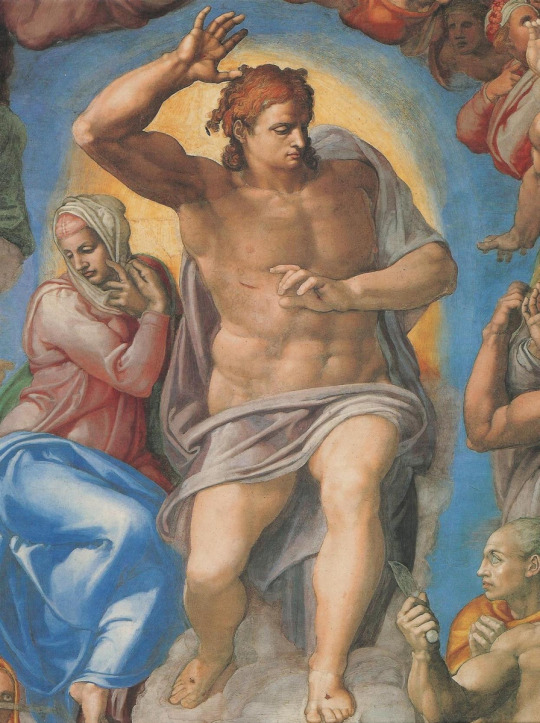
I think the truth lies somewhere between but what that truth might actually be is simply speculation on my part. It doesn’t detract for me the life and saving mission of redemption that Jesus was on - to suffer and die for our sins as well as the Godhead reconciling itself to sacrificing the Son for Man’s sins and just punishment.
Of course, it is well-known that the classical gods had no qualms about sexual activity. It is difficult to make retrospective judgements about citizens’ opinions on this but, as it was the norm, we might assume that they felt it was rather a non-issue. I can empathise with some critics who reason that the Christian God is not entitled to sexual expression is because of the traditional Christian idea that sex is inherently sinful – that original sin is passed on seminally and so by having sex we continue to spread darkness and provoke further transgression. It is from this early idea that theological issues such as the need for Mary to have been immaculately conceived (she was not created out of a sexual union, much like her son) have stemmed. But here - the immaculate conception - the critics are profoundly wrong in their theological understanding of why God had to enter the world as Immanuel in this miraculous way.
Some Christian critics - and I would agree with them - assert that the vision of a naked Christ might make a powerful theological point in a world where sex still carries these connotations. They rightly point out that clothing - and I might extend this to mean the covering-up of the sexual parts of our body - was only adopted by humankind after the Fall, the nudity of Christ is making a statement about his unfallen nature as the second Adam. In other words, Christ has no shame, because he is sinless and has no need for shame. Perhaps what Michelangelo intended was actually to disentangle nudity from its sexual, sinful associations, instead presenting us with a pre-lapsarian image of purity taking the form of the classical Bronze Age hero.
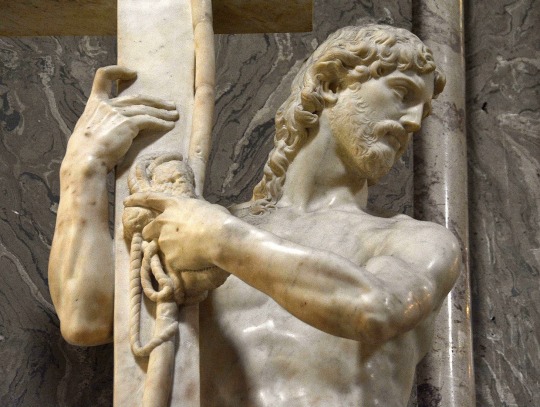
There is another, less theological explanation for the sculptor’s obvious use of the classical form. It reminds us of a time when gods walked the earth alongside us, when they were fully human – us, only immortal. Maybe he wanted to emphasise that fully human aspect of Christ’s being. Questionable as much of their behaviour was, the classical gods were certainly easy to identify with. For Michelangelo, this may have been his own way of embodying John 1:14 in marble: ‘The Word became flesh and made his dwelling among us’.
It is here critics may have gotten hold of the wrong end of the stick with The Risen Christ when they point out the odd proportions of the figure: that it has a weighty torso, or the broad hips atop a pair of tapered and rather spindly legs, or even a side or rear view of the figure that show Christ’s buttocks.
For a start, this ungainly rear view was not supposed to be seen. The statue was meant to go in a wall niche, so that the back of the statue was hidden. Michelangelo of course knew this, and shaped the statue so that it would appear well proportioned from the front. If we view the sculpture from the front left, perhaps its best side, then Christ is no longer a thickset figure. Rather, his body merges with the cross in a graceful and harmonious composition.
The turn of Christ’s body and his averted face suggest something like the shunning of physical contact that is central to another post-Resurrection subject, the Noli me tangere (“Touch Me Not”). The turned head is a poignant way of making Christ seem inaccessible even as the reality of his living flesh is manifest.
We are encouraged to look at not Christ’s face, but the instruments of his Passion. Our attention is directed to the cross by the effortless cross-body gesture of the left arm and the entwining movement of the right leg. With his powerful but graceful hands, Christ cradles the cross, and the separated index fingers direct us first to the cross and then heavenward. Christ presents us with the symbols of his Passion – the tangible recollection of his earthly suffering.
Behind Christ and barely visible between his legs we see the cloth in which Christ was wrapped when he was in the tomb. He has just shed the earthly shroud; it is in the midst of slipping to earth. In this suspended instant, Christ is completely and properly nude.

We must imagine how the figure must have appeared in its original setting, within the darkened confines of an elevated niche. Christ steps forth, as though from the tomb and the shadow of death. Foremost are the symbols of the Passion, which Christ will leave behind when he ascends to heaven.
Why was Michelangelo compelled to portray Christ completely naked in a way that was bound to trouble some Christians? It was not out of a desire to blaspheme. On the contrary, this genius – poet, architect and painter as well as the greatest sculptor who has ever lived – was not only a faithful Christian but someone who thought deeply about theology. You can bet he had good religious reasons to depict Christ in full nudity.
But it would be complacent to think there was no tension in showing Christ nude. The fact that The Risen Christ in Santa Maria still has its covering proves how real those tensions are. The fundamental reason Michelangelo could get away with it was that he was Michelangelo. By the time he created this statue, he had the Sistine Chapel ceiling (with all its male nudes) under his belt and was the most famous artist in the world.
For centuries, the faithful have kissed the advanced foot of Christ, for like Mary Magdalene and doubting Thomas, they wish for some sort of physical contact with the Risen Christ. To carve a life-size marble statue of a naked Christ certainly was audacious, but it is also theologically appropriate. Michelangelo’s contemporaries recognised, more easily than modern viewers, that the Risen Christ was a moving and profoundly beautiful sculpture that was true to the sacred story.
#the risen christ#michelangelo#marble#church#christian#beauty#aesthetics#statue#religious#renaissance#history#rome#bernini#art#arts#culture#society#religion#sculpture
201 notes
·
View notes
Text
Vicenza: autista di Tir colpito da un infarto. Salvato dal tempestivo intervento degli agenti della Polizia

Vicenza: autista di Tir colpito da un infarto. Salvato dal tempestivo intervento degli agenti della Polizia.
Ancora una volta il tempestivo intervento degli Agenti di Polizia permette di salvare la vita di un uomo colpito da infarto.
E’ successo alle 12.30 circa di martedì sul cavalcavia della ss47 in località Romano d’Ezzelino - uscita Romano nord, allorquando un automobilista che transitava sul luogo si accorgeva di un Tir accostato male sul ciglio della strada con il conducente accasciato sul volante.
L’operatore della Centrale Operativa del Commissariato di P.S. di Bassano del Grappa (VI), quindi, inviava immediatamente sul posto una pattuglia in servizio di controllo del territorio con a bordo il dispositivo DAE (Defibrillatore Automatico Esterno) che si trovava a pochissima distanza e, comprendendo la gravità della situazione, contattava il 118 per l’invio dei mezzi sanitari di soccorso.
Gli Agenti giunti sul posto non si sono persi d’animo e vedendo che l’uomo era ormai cianotico si disponevano per l’immediato uso del defibrillatore per potere procedere alla rianimazione cardiopolmonare.
In contatto anche con il personale della centrale Operativa 118 hanno tenuto in vita per i successivi 10 minuti il malcapitato, fino a quando giungeva anche l’ambulanza con al seguito l’automedica, il cui personale, dopo avere preso in carico l’infartuato e trasportato presso l’Ospedale di Bassano del Grappa, si complimentava con gli Agenti per la professionalità dimostrata.
Il tempestivo intervento degli Agenti con il defibrillatore e le contemporanee manovre di rianimazione hanno fatto sì che l’uomo non perdesse la vita.
Da tanti anni in Questura vengono tenuti corsi di formazione e di aggiornamento professionale specifici per l’uso del Defibrillatore, ed è proprio grazie alla frequenza ad uno di questi corsi che i tre Agenti di Polizia del Commissariato di P.S. di Bassano del Grappa – il Vice Sovrintendente Eros Tosin in servizio presso la Centrale Operativa, l’Agente Scelto Piscitelli Michele ed Agente Pellicano’ Vincenzo, tutti in servizio presso la Sezione “Volanti”, - sono stati in grado di intervenire prontamente....
#notizie #news #breakingnews #cronaca #politica #eventi #sport #moda
Read the full article
0 notes
Text
Antonio Canova
Antonio Canova
La scultura neoclassica: "una pacata grandiosità"

Antonio Canova, Due nudi stanti: l'uno di dorso, l'altro di prospetto. Matita e carboncino su carta bianca, 42,2x32,7 cm. Bassano del Grappa, Museo Civico

Nudo maschile. Antonio Canova

Antonio Canova, Nudo femminile andante, di profilo. Matita e carboncino su carta bianca, 44,2x30,4 cm. Bassano del Grappa, Museo Civico.

Antonio Canova, Dedalo e Icaro, 1777-1779. Marmo, alt. 200 cm, larg. 95 cm, prof. 97 cm. Venezia, Museo Cavour

Antonio Canova, Teseo e il Minotauro, 1781-1783. Marmo, alt. 145, 4 cm, largh. 158,7 cm, prof. 91,4 cm. Londra, Victoria & Albert Museum.
Di statura europea fu lo scultore Antonio Canova capace di superare la sua epoca e i confini della sua terra. Egli fu infatti in grado di collaborare, nello stesso tempo, con Napoleone e con il governo pontificio di cui era ospite.
Nato a Possagno (Treviso) nel 1757, Canova ricevette una prima formazione ad Asolo, presso lo scultore Giuseppe Bernardi, e a Venezia, dove frequentò i corsi di nudo all'Accademia ed ebbe un primo incontro con l'antico grazie alla vasta collezione di calchi in gesso dell'abate Filippo Farselli.
Le sue prime opere come Dedalo e Icaro (1777-1779), denunciano anche i legami con la scultura barocca, forse avvicinata in copia presso la collezione dell'abate veneziano.
L'incontro con l'antico si approfondì a partire dal 1779, quando Canova si trasferì a Roma, entrando presto in rapporto con gli artisti veneti là dimorati (tra gli altri, gli architetti Giovanni Antonio Selva e Giacomo Qarenghi) e con esponenti di punta della cultura neoclassica.
Ne derivò una più precisa riflessione sulla classicità evidente nel gruppo Teseo e il Minotauro del 1781-1783. Nell'eroe greco, rappresentato seduto sul mostro che ha appena ucciso, e simboleggia la vittoria della ragione sulla bestialità sulle forze dell'irrazionalità.
Il corpo semidivino è perfetto, rispondente in tutto e per tutto agli ideali che erano stati espressi da Winckelmann. Sul volto, chiaramente modellato sulla statuaria, non trapela la furia della lotta ma solo la tranquillità, non priva di fierezza, di chi ha ottenuto una difficile ma inevitabile vittoria.
I monumenti papali: la morte come sonno

Antonio Canova, Monumento funerario di Clemente XIV, 1783-1787. Marmo, 740x590x295 cm. Roma, Basilica dei Santi Apostoli.

Antonio Canova, Monumento funerario a Clemente XIII, 1787-1792. Marmo 820x630x254 cm. Roma, Basilica di San Pietro.
Ormai affermatosi nell'ambiente romano, Canova ricevette importanti commissioni, a partire da quella, nel 1783 per la Tomba di Clemente XIV per la Chiesa dei Santi Apostoli. Il modello, il monumento funebre berniniano è decisamente superato, perché all'animazione barocca si sostituisce una partizione rigorosa degli elementi e perché sono esclusi gli effetti pittoreschi e il tumulto dei panneggi.
Ancora più impegnativa è la successiva commissione per il Mutamento a Clemente XIII in San Pietro (1787-1792) per il quale Canova approfondisce il tema tipicamente neoclassico della morte come sonno sulla base di una grandiosità e di una "calma" che caratterizzano ogni elemento dell'opera: il papa inginocchiato in preghiera, la figura della Fede l'adolescente con la torcia rovesciata. Una certa severità nel monumento, convive con la leggerezza che si esprime nel languore dell'adolescente incaricato di rappresentare la morte, sorella del sonno.
Soavità e leggerezza costituiscono infatti un altro polo della poetica canoviana, come nel gruppo di Amore e Psiche, del 1788-1793 dove i due amanti si abbracciano secondo un'insistita ricerca di contrappunti armonici, morbidi e privi di tensioni.
L'artista ufficiale


Antonio Canova, Paolina Borghese Bonaparte raffigurata come Venere vincitrice, 1808. Marmo, larghezza 200 cm, Roma, Galleria Borghese
#Antonio Canova#scultura#arte#storia#cultura#Neoclassicismo#arteneocalssica#ottocento#buio e luce#luce#luce tra cielo e terra#tra cielo e terra
9 notes
·
View notes
Quote
Tutti i prodotti DOP:
Aceto balsamico tradizionale di Modena
Aceto balsamico tradizionale di Reggio Emilia
Aglio bianco Polesano
Aglio di Voghera
Alto Crotonese
Aprutino Pescarese
Arancia di Ribera
Asiago
Asparago Bianco di Bassano
Basilico Genovese
Bergamotto di Reggio Calabria – Olio essenziale
Bitto
Bra
Brisighella
Brovada
Bruzio
Caciocavallo Silano
Canestrato Pugliese
Canino
Capocollo di Calabria
Carciofo Spinoso di Sardegna
Cartoceto
Casatella Trevigiana
Casciotta d’Urbino
Castagna di Vallerano
Castelmagno
Chianti Classico
Cilento
Ciliegia dell’Etna
Cinta Senese
Cipollotto Nocerino
Collina di Brindisi
Colline di Romagna
Colline Pontine
Colline Salernitane
Colline Teatine
Coppa Piacentina
Cozza di Scardovari
Crudo di Cuneo
Culatello di Zibello
Dauno
Fagioli Bianchi di Rotonda
Fagiolo Cannellino di Atina
Farina di Castagne della Lunigiana
Farina di Neccio della Garfagnana
Farro di Monteleone di Spoleto
Fichi di Cosenza
Fico Bianco del Cilento
Ficodindia dell’Etna
Ficodindia di San Cono
Fiore Sardo
Fontina
Formaggella del Luinese
Formaggio di Fossa di Sogliano
Formai de Mut dell’Alta Valle Brembana
Garda
Gorgonzola
Grana Padano
Irpinia – Colline dell’Ufita
La Bella della Daunia
Laghi Lombardi
Lametia
Liquirizia di Calabria
Lucca
Marrone di Caprese Michelangelo
Marrone di San Zeno
Mela Val di Non
Melanzana Rossa di Rotonda
Miele della Lunigiana
Miele delle Dolomiti Bellunesi
Miele Varesino
Molise
Montasio
Monte Etna
Monte Veronese
Monti Iblei
Mozzarella di Bufala Campana
Murazzano
Nocciola Romana
Nocellara del Belice
Nostrano Valtrompia
Oliva Ascolana del Piceno
Oliva di Gaeta
Ossolano
Pagnotta del Dittaino
Pancetta di Calabria
Pancetta Piacentina
Pane di Altamura
Pane Toscano
Parmigiano Reggiano
Patata di Bologna
Patata Novella di Galatina
Pecorino Crotonese
Pecorino delle Balze Volterrane
Pecorino di Filiano
Pecorino di Picinisco
Pecorino Romano
Pecorino Sardo
Pecorino Siciliano
Pecorino Toscano
Penisola Sorrentina
Peperone di Pontecorvo
Piacentinu Ennese
Piave
Pistacchio Verde di Bronte
Pomodorino del Piennolo del Vesuvio
Pomodoro S. Marzano dell’Agro Sarnese-Nocerino
Pretuziano delle Colline Teramane
Prosciutto di Carpegna
Prosciutto di Modena
Prosciutto di Parma
Prosciutto di San Daniele
Prosciutto Toscano
Prosciutto Veneto Berico-Euganeo
Provolone del Monaco
Provolone Valpadana
Puzzone di Moena/Spretz Tzaori
Quartirolo Lombardo
Ragusano
Raschera
Ricotta di Bufala Campana
Ricotta Romana
Riso di Baraggia Biellese e Vercellese
Riviera Ligure
Robiola di Roccaverano
Sabina
Salame Brianza
Salame di Varzi
Salame Piacentino
Salamini Italiani alla Cacciatora
Sale Marino di Trapani
Salsiccia di Calabria
Salva Cremasco
Sardegna
Seggiano
Silter
Soppressata di Calabria
Sopressa Vicentina
Sopressa delle Giudicarie
Squacquerone di Romagna
Stelvio o Stilfser
Strachitunt
Susina di Dro
Taleggio
Tergeste
Terra d’Otranto
Terra di Bari
Terre Aurunche
Terre di Siena
Terre Tarantine
Tinca Gobba Dorata del Pianalto di Poirino
Toma Piemontese
Tuscia
Umbria
Val di Mazara
Valdemone
Valle d’Asota Fromadzo
Valle d’Aosta Jambon de Bosses
Valle d’Aosta Lard d’Arnad
Valle del Belice
Valli Trapanesi
Valtellina Casera
Vastedda della Valle del Belice
Veneto Valpolicella
Veneto Euganei e Berici
Veneto del Grappa
Vulture
Zafferano dell’Aquila
Zafferano di San Gimignano
Zafferano di Sardegna
Dall’articolo "Mozzarella Gioia del Colle: in Gazzetta Ufficiale la domanda per la Denominazione di Origine Protetta (DOP)" di Manuela Chimera
5 notes
·
View notes
Photo

Francesco Albani
The Phaethon Legend: River Gods Eridanus, Heliades, and Cycnus
1609-10
Palazzo Odescalchi Giustiniani, Bassano Romano
🇮🇹 #italy
🎨 #painting
#fresco#art#lol#caption this#funny art#classical art meme#Baroque#italy#painting#Francesco Albani#Phaethon
3 notes
·
View notes